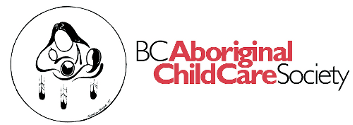A screening mechanism to recognize and support at-risk Aboriginal children Nancy L. Young, Diane Jacko, Mary Jo Wabano, Lauren Hawthorne, Sarah Seabrook, Sheri Wabanosse, Koyo Usuba [citation] /
Material type: ArticlePublication details: 2016Subject(s): Well-being | Children -- Health aspects | Screening and assessment
In:
Canadian Journal of Public Health Vol. 107, no. 4-5 (2016), p. E399-E403Abstract: OBJECTIVES: The Aboriginal Children’s Health and Well-Being Measure© (ACHWM) was developed to assess health from the perspectives of Aboriginal children. The purpose of this paper is to document the screening process, embedded within the ACHWM, and assess its effectiveness.
METHODS: The ACHWM was implemented in 2014/2015 with children 8 to 18 years of age living on the Wiikwemkoong Unceded Territory. Survey responses were screened to identify potential risk, using an automated algorithm run on computer tablets. Local mental health workers conducted brief mental health assessments to identify and support children at-risk. Data were analyzed to estimate effectiveness of this screening process.
RESULTS: A total of 293 children completed the ACHWM. The screening tool identified 35% with potential risk. Mental health workers confirmed 18% of all participants as being at-risk, and all were referred for support. The sensitivity of the tool was 75% while specificity was 79%. Improvements to the screening algorithm resulted in a specificity of 97% and negative predictive value of 95%, with no loss of sensitivity.
CONCLUSION: Responsible population health surveys require a process to recognize and respond to answers indicative of health risks. This paper provides an example of a screening and triage process that enabled our survey team to screen responses in real time, respond to potential risk immediately, and connect participants to local support services. This process proved essential to conducting an ethical survey. The high specificity and negative predictive value make it an effective triage tool that is particularly valuable in Aboriginal communities and with higher-risk populations.
KEYWORDS: Mental health; early medical intervention; child; adolescent; Indigenous population; surveys and questionnaires
ArticlePublication details: 2016Subject(s): Well-being | Children -- Health aspects | Screening and assessment
In:
Canadian Journal of Public Health Vol. 107, no. 4-5 (2016), p. E399-E403Abstract: OBJECTIVES: The Aboriginal Children’s Health and Well-Being Measure© (ACHWM) was developed to assess health from the perspectives of Aboriginal children. The purpose of this paper is to document the screening process, embedded within the ACHWM, and assess its effectiveness.
METHODS: The ACHWM was implemented in 2014/2015 with children 8 to 18 years of age living on the Wiikwemkoong Unceded Territory. Survey responses were screened to identify potential risk, using an automated algorithm run on computer tablets. Local mental health workers conducted brief mental health assessments to identify and support children at-risk. Data were analyzed to estimate effectiveness of this screening process.
RESULTS: A total of 293 children completed the ACHWM. The screening tool identified 35% with potential risk. Mental health workers confirmed 18% of all participants as being at-risk, and all were referred for support. The sensitivity of the tool was 75% while specificity was 79%. Improvements to the screening algorithm resulted in a specificity of 97% and negative predictive value of 95%, with no loss of sensitivity.
CONCLUSION: Responsible population health surveys require a process to recognize and respond to answers indicative of health risks. This paper provides an example of a screening and triage process that enabled our survey team to screen responses in real time, respond to potential risk immediately, and connect participants to local support services. This process proved essential to conducting an ethical survey. The high specificity and negative predictive value make it an effective triage tool that is particularly valuable in Aboriginal communities and with higher-risk populations.
KEYWORDS: Mental health; early medical intervention; child; adolescent; Indigenous population; surveys and questionnaires
OBJECTIVES: The Aboriginal Children’s Health and Well-Being Measure© (ACHWM) was developed to assess health from the perspectives of Aboriginal children. The purpose of this paper is to document the screening process, embedded within the ACHWM, and assess its effectiveness.
METHODS: The ACHWM was implemented in 2014/2015 with children 8 to 18 years of age living on the Wiikwemkoong Unceded Territory. Survey responses were screened to identify potential risk, using an automated algorithm run on computer tablets. Local mental health workers conducted brief mental health assessments to identify and support children at-risk. Data were analyzed to estimate effectiveness of this screening process.
RESULTS: A total of 293 children completed the ACHWM. The screening tool identified 35% with potential risk. Mental health workers confirmed 18% of all participants as being at-risk, and all were referred for support. The sensitivity of the tool was 75% while specificity was 79%. Improvements to the screening algorithm resulted in a specificity of 97% and negative predictive value of 95%, with no loss of sensitivity.
CONCLUSION: Responsible population health surveys require a process to recognize and respond to answers indicative of health risks. This paper provides an example of a screening and triage process that enabled our survey team to screen responses in real time, respond to potential risk immediately, and connect participants to local support services. This process proved essential to conducting an ethical survey. The high specificity and negative predictive value make it an effective triage tool that is particularly valuable in Aboriginal communities and with higher-risk populations.
KEYWORDS: Mental health; early medical intervention; child; adolescent; Indigenous population; surveys and questionnaires

There are no comments on this title.